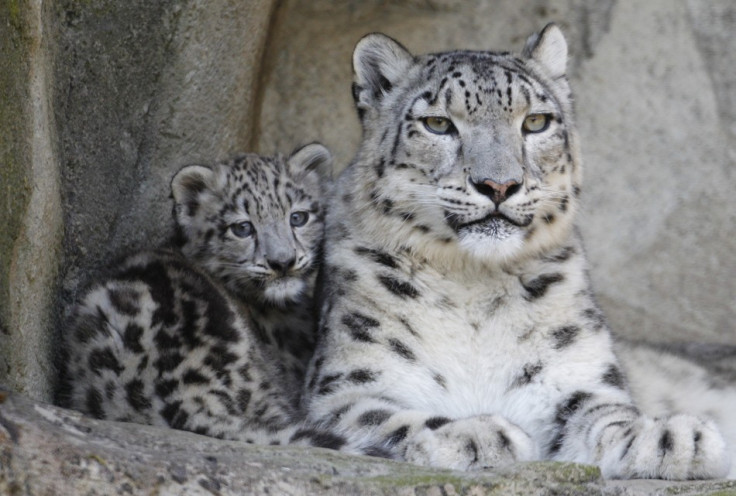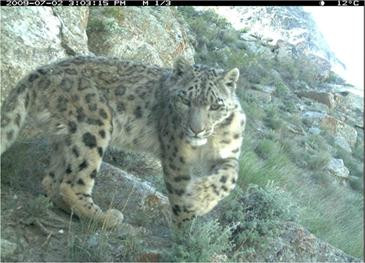Snow leopard numbers far higher than thought but threats to elusive big cats remain
New estimates show there are between 4,678 and 8,745 snow leopards across just half the species' range.
Snow leopard numbers are far higher than previously thought, with up to 8,745 of the elusive big cats living across less than half the species range. This is far higher than the entire global population estimate, which was put at as low as 3,920 individuals.
Snow leopards are currently listed as endangered, with habitat loss, poaching and conflict with humans the biggest threats to the species. They live across mountain ranges in Asia, with populations found in in Afghanistan, China, India, Kazakhstan, Mongolia, Nepal, and Russia, among others.
Because of their shy behaviour, their coats ideally camouflaged to mountain living and remote habitat, establishing an accurate population has been difficult. It has also meant the snow leopard is one of the least studied big cat in the world.
Using advanced satellite systems and compact camera traps, scientists have now been able to more accurately estimate the population of snow leopards across a range spanning 3 million km<sub>2 – an area making up 44% of the species' range. Their findings showed there were between 4,678 and 8,745 snow leopards in this area alone – far higher than the previous global estimate (3,920 to 7,500).

However, experts warn that while the new population numbers offer some respite to extinction concerns, threats still remain to the species: "The protection of snow leopards, their prey, and their unique high-mountain landscapes must continue to be a priority for the global community," said Peter Zahler, coordinator for the Wildlife Conservation Society's Snow Leopard Programme.
"Because of the low human density in these mountains, there is still extensive habitat for snow leopards. But with growing pressures – hunting, mining, roads, and even climate change – our window for ensuring long-term protection of these big cats will close fast."

Richard Paley, Director of the WCS Afghanistan Programme, said: "Snow leopards are still regularly poached for their beautiful fur. They are also killed in retaliation for taking herder's livestock. With the decline in their wild prey from overhunting, snow leopards may find themselves forced to take more livestock, which leads to a vicious cycle that snow leopards often lose."
Dale Miquelle, WCS Big Cat expert, added: "We have lost over 90% of the world's wild tigers in the last 100 years, and we have lost over 40% of African lions in the last 20 years. Big cats around the world are in danger of extinction. While it is great news to discover that there are more snow leopards than we thought, there is also a good chance that this situation might not last."
Snow Leopard
The latest findings are published in the Elsevier Press book Snow Leopards. Edited by experts Tom McCarthy and David Mallon, it is the most comprehensive assessment of snow leopards to date. Zahler said: "This is an incredibly important book. It has collected virtually all the most recent research and information from all 12 range states, covering biology, behaviour, threats, and conservation activities for this mysterious and elusive big cat ... This book will serve as the go-to reference work on snow leopards for decades to come."
© Copyright IBTimes 2025. All rights reserved.






















